Jan van Eyck - The Ghent Altar, detail 1432
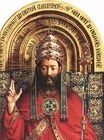 |
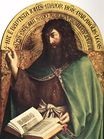 |
 |
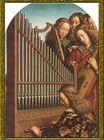 |
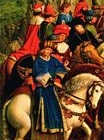 |
 |
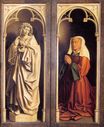 |

The Ghent Altar, detail 1432
oil on wood
St. Bavo Cathedral, Ghent, Belgium
<< Previous G a l l e r y Next >>
From Wikipedia, the free encyclopedia:
The Ghent Altarpiece (or the Adoration of the Mystic Lamb, Dutch: Het Lam Gods) is a very large and complex 15th-century polyptych altarpiece in St Bavo's Cathedral, Ghent, Belgium. It was begun c. the mid-1420s and completed before 1432, and is attributed to the Early Netherlandish painters and brothers Hubert and Jan van Eyck. The altarpiece is considered a masterpiece of European art and one of the world's treasures.
The left hand panel's frame is inscribed with the words MELOS DEO LAUS ("Music in Praise of God"), the frame of to the right with LAUDATE EUM IN CORDIS ET ORGANO ("Praise him with stringed instruments and organs"). A number of art historians have defined the figures as angels based on their positioning and role within the overall context of the registers. They are sexless and possess cherub faces, which contrast with the realistic depictions of the other full-sized non-divine females in the work; Eve in the same register and Lysbette Borluut in the outer panels. The angels are dressed in elaborately brocaded ecclesiastical copes or chasubles, mostly painted in reds and greens. Their robes indicate that they are intended as representative of the celebration of mass before the altar in the lower central panel.